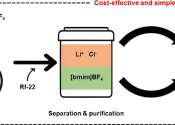Producing hydrogen and fertilizer at the same time
A research team from the University Alliance Ruhr, Germany, has found a catalyst that can be used to convert ammonia into the energy carrier hydrogen and the fertilizer precursor nitrite. The production of hydrogen and the ...









